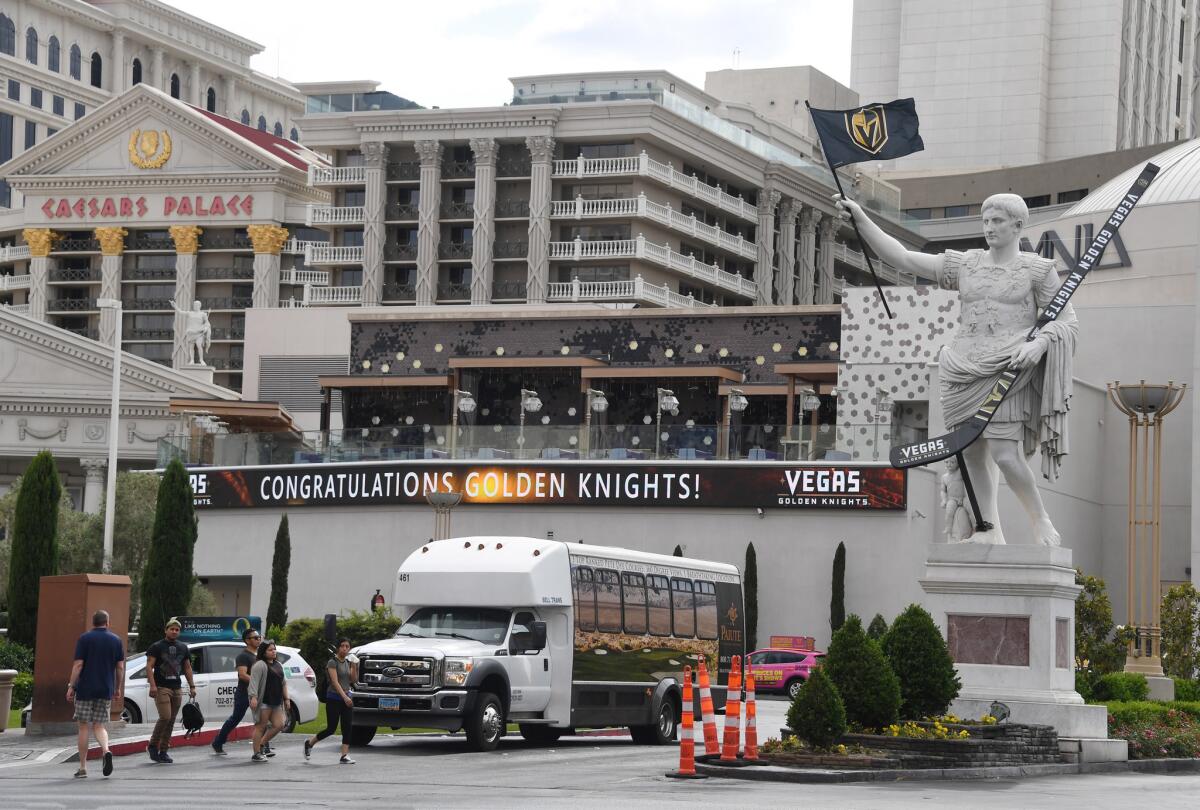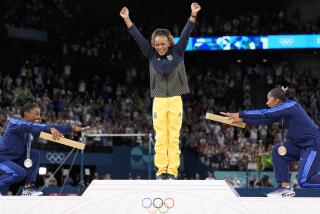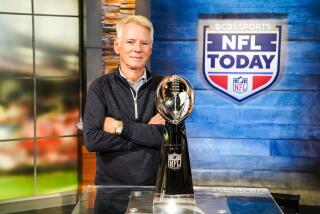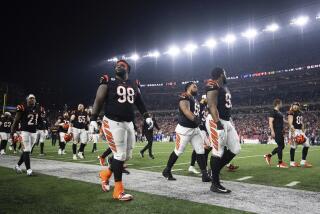When sports return, they will once again play the role of national healer

- Share via
Only four major sporting events — if you count the Westminster Kennel Club dog show as sport — have never been interrupted by civil strife, including the Great Depression, the 1918 flu pandemic and both world wars. Both the dog show and the Rose Bowl have already been staged this year. That leaves the 2020 Kentucky Derby and the Boston Marathon, both rescheduled for September.
In their long histories, the derby and the marathon have had date changes, so their uninterrupted records won’t require asterisks if they take place as planned. They will survive the coronavirus pandemic and go on as before, perhaps with even more celebration and resilience.
And with the help of spectator sports, so will we.
Sports as “social entities” have a role in helping communities and their residents bounce back from severe disaster, according to researchers who studied the effect of spectator sport on victims of natural and man-made disasters between 2001 and 2011. The time span covers thousands of catastrophes, including 9/11 and the 2011 earthquake that triggered deadly tsunamis in Japan.
The two psychology professors showed that sports provide social support in post-disaster situations in distinct ways, many of them tangible — such as motivating fans to increase donations and volunteerism — and some emotional, including alleviating stress and providing a sense of hope.
Recently, pundits have suggested that our love of sports cannot survive a few months, or potentially the rest of the year, without them. Headlines asking “Does Coronavirus Mean the End of Sports as We Know Them?” and “Our Sports Changed Forever” suggest that even a temporary pause may make fans lose their passion or weaken our bond with sports.
Ignore the leagues, mute the coaches, and listen to the science regarding COVID-19. It might be time to bench the sports world until 2021, Bill Plaschke writes.
Over the last few years, I’ve studied what makes sports fans tick and what our love of sports means to us as a society. So this doom and gloom surrounding spectator sports puzzles me, because history shows sports have a medicinal power. They do cure what ails us.
Last year, 89 of the 100 most-watched TV programs focused on sports. Additionally, nearly 60 million Americans participate in fantasy sports, which cannot exist without real-life games. The most common motive fantasy players give for participating is “a sense of community and belonging.”
Fans grieving the absence of sports, those who desperately missed March Madness or yearn for baseball’s opening day, are starving for games to return. When they do, sports will once again play the role of national healer.
I’m not going out on a limb here, because sports has the track record to prove their link between trying times and healing.
Survivors of the 2017 Las Vegas concert turned massacre — the worst mass shooting in American history — told me again and again that sports helped mend and bring the city together. Specifically, the Cinderella debut season of the NHL’s Las Vegas Golden Knights, which played its first game just nine days after and a few blocks from the site of the attack. Every game was a sellout.
Jessica Duran, who survived the shooting, was afraid to leave her home for weeks, let alone dive back into crowds in the heart of the Strip. As the buzz around the Knights grew, she finally attended her first professional hockey game. She would go back 50 more times that season. Becoming a fan helped her confront her fear and “take control” of her life, she said.
Casino dealers, Uber drivers, bartenders, among many others, said they strongly believed that sports medicine arrived exactly when it was needed most.
“You can’t mention one without the other,” said Carolyn Goodman, mayor of Las Vegas. “We had just been brought to our knees by this horrible, diabolical tragedy. … For the Golden Knights to have that season and start the healing process, the timing was incredible. It took us from a really dark place and gave us hope.”
New York City’s 9/11 Museum staged an exhibit last year that centered on the vital role spectator sports played in reuniting a terrified nation. Called “The Comeback Season: Sport After 9/11,” it also documented the similar role sports has played after many other tragedies. Exhibit curator Hicks Wogan, originally from New Orleans, said, “I still remember how sports helped after Hurricane Katrina. … We saw it after the Boston Marathon bombing and the terrorist attacks in Paris. This is a recurring story that plays out over and over throughout history and around the world.”
The last time all major sports went dark was after 9/11, and their comeback to the national stage was marked by a Mets-Braves contest in New York that ended in storybook fashion with a come-from-behind winning home run by Mets catcher Mike Piazza. Most baseball fans I know recall the emotions it evoked. “That game was the moment when we went from being citizens full of rage and sorrow and anger to being fans again, it was OK to clap again, and to laugh and smile,” said Taylor Shields, a sports-crazed fan in Colorado.
Carol Gies and her three sons attended that game. Her husband, New York City Fire Department Lt. Ronnie E. Gies, was killed in 9/11. The family had always been huge Mets fans and felt like “it was the place we had to be,” Gies later said. “When that ball went over the wall, I saw my children smile for the first time since they lost their dad. 9/11 went away for that one split-second. I was like, ‘You know what, we’re going to get through it.’ ”
America’s stadiums are often described as temples of their respective sports, but the reality is they are bigger than houses of worship and are often the largest places people can come together. When the games resume, stadiums will once again be full of fans celebrating normalcy, the simple fact that they can sit next to strangers instead of staying six feet away — and cheer as one.
Larry Olmsted is the author of the forthcoming book “Fans,” about new research on sports fans, and a visiting professor at Dartmouth College.
More to Read
A cure for the common opinion
Get thought-provoking perspectives with our weekly newsletter.
You may occasionally receive promotional content from the Los Angeles Times.










